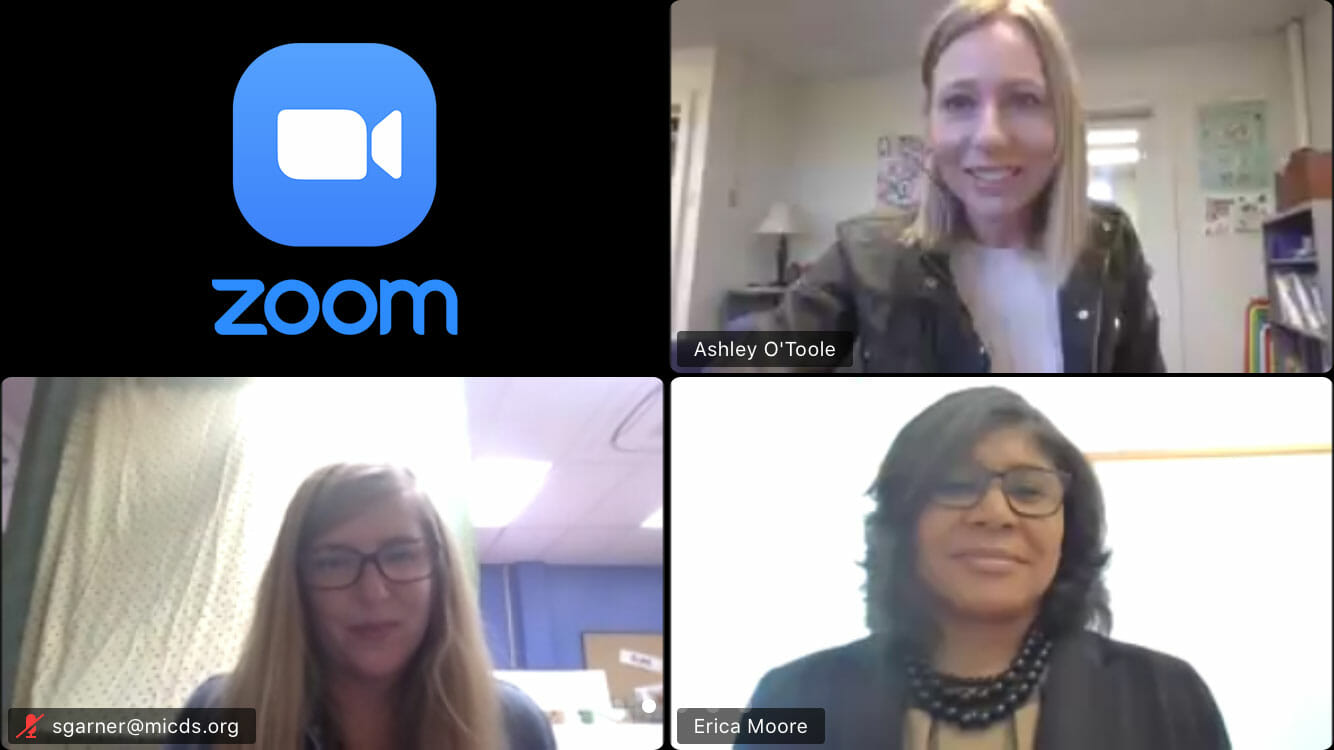The latest Lower School Parent Education session featured an important and timely topic: talking to young children about race, prejudice, and bias. The session was skillfully organized and led by Director of Faculty Equity and Inclusion and Director of Student Activities Erica Moore, Lower School Visual Art Teacher Sarah Garner, and Lower School Learning Specialist and Counselor Ashley O’Toole. Parents and caregivers of our Beasley JK-4th grade students attended the Zoom session and engaged in conversation with each other and with school administrators. The goal of the session was to share resources, tools, ideas, and language to help parents navigate these conversations at home with their children.
Moore began the conversation by offering a few community norms for the discussion. For example, she encouraged participants to speak from the “I” perspective and to listen and lean into any discomfort that arises. She also said that there would be “no shame, no blame, and no guilt” in the session, so parents were welcome to express themselves openly and allow for some vulnerability. These community norms helped to set the stage for a fruitful discussion.
Moore also provided some terms and definitions from a variety of sources – such as Merriam Webster Dictionary, Oxford English Dictionary, and How to be an Antiracist by Ibram X. Kendi – to help build a common foundation for conversation. For example, she shared the definition of race as a social construct based on physical criteria and skin color. She also acknowledged racial equity as a condition that would be achieved if one’s racial identity no longer predicted, in a statistical sense, how one fared. Moore dove a bit deeper into the term antiracist, as that is a word that is frequently used in modern times. The basic definition of antiracist is “opposes racism and promotes racial tolerance,” thus, there is an active aspect of the word. To be antiracist means to ensure that we are working towards inclusive and equitable practices and policies. Although it is easy to confuse and conflate some of the racial terminologies, it is important to recognize that each term has a distinct meaning and that they cannot be used interchangeably.
After the foundation was set, the conversation shifted to talking with children about race. Moore shared that she has seven nieces and nephews, and they all went through the “why” phase. Even as the doting auntie, she didn’t always have the right answers for their many questions. That can be unnerving as an aunt, and downright stressful as a parent or caregiver, but it is okay that we don’t have all the answers, especially when it comes to the topic of race, prejudice, and bias. Moore shared, “Don’t be intimidated by their questions. We are all learning and growing together. Lean into the discomfort, uncertainty, and vulnerability involved in these discussions.”
Moore shared several helpful tips from The Chronical of Higher Education’s article “Teaching: Talking with Students about Racism”:
- Be open to the conversation. Don’t shy away from it.
- Promote a learning environment for all. It’s okay to be uncertain and constantly learning about the topic.
- Explore your own feelings on the topic, and take the time to process your thoughts.
- Connect the conversation to something they are learning in the classroom.
- Seek support from other parents, teachers, and professionals (including herself). Reach out via email or phone to ask advice on how to approach a particular conversation.
- Engage with available resources. This Padlet provides several helpful articles, books for children and adults, Ted Talks, and virtual learning opportunities with local organizations.
Head of School Jay Rainey also participated in the call and shared his perspective. “If I were speaking to Lower School children at this time and on this topic, here is what I would say. At MICDS, we love you for who you are as a unique individual. We love you as the whole you, not only the characteristics that you inherited from your parents, such as your race and so many other aspects of your identity such as your height and voice tone. We are affected by those characteristics, but not defined by them. You are growing up at a time that human beings are healing and recovering from a history that includes an over-focus and over-prioritization on the importance of race in a person’s identity. Be committed to being your very best self, and also helping your friends be their very best selves as well.”
Overall, the discussion was very engaging, and several parents shared their perspectives and stories related to this topic. In fact, the discussion was so robust that we ran out of time! Plans are underway to host a “part 2” of this session, so be on the lookout in the Weekly News for future event invitations. Thank you to all the parents and school administrators who participated in this call!
